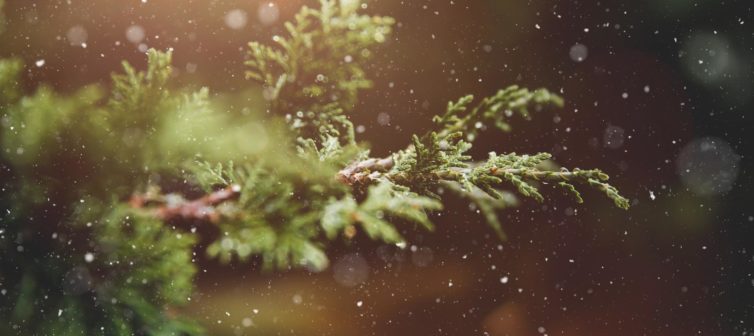
How to Pick the Perfect Christmas Tree
More and more people are discovering the joys of having a real evergreen in their home during the Christmas holidays.
For many (your author included), one of the warmest memories of Christmas’ past is the warm, clean smell emanating from the fresh Douglas fir, Scotch pine, or Frasier fir standing proudly in the corner. Attracting small children and adults alike, and even luring the occasional unruly dog, a fresh Christmas tree is an integral part of Christmas.
For those who have never fully experienced selecting, transporting, setting up, and disposing of a live tree, it can seem like a daunting task. However, with a few tips, you will find that it really is one of life’s simple–and most rewarding–pleasures.
Size up your options.
The first, and arguably most important, step takes place long before you get to the tree farm or tree lot. Let us turn to an adage from our carpenter friends: measure twice, cut (or buy) once. A 10-foot tree, no matter how perfect or lovely, will not fit in a room with 8-foot ceilings–not upright anyway. Measure your room from floor to ceiling and subtract the height of your tree stand as well as the height of whatever you intend to top the tree with. We don’t want any four-sided stars or angels with crushed halos.
It is equally important to measure the width of the area where the tree will stand, preferably a corner or a part of the room out of the way of heavy foot traffic with a nearby electrical outlet. And, this should go without saying, this area should also be well away from any open flames.
Take a stand.
One of the best things that you can do for yourself is to take the tree stand with you when you go to select your tree. Models of tree stands vary widely so having the genuine article with you will allow you to ensure that your tree will fit inside your tree stand.
Make a healthy choice.
Now, onto the tree itself. Depending on what part of the country you live in, you will see a variety of species used for Christmas trees. Any reputable tree farm or tree lot will be well versed in the pros and cons of the varieties they carry and will be more than happy to answer any questions you may have.
Just in case you run into the rare unscrupulous tree dealer, here are two tips you can use to make sure that your tree doesn’t end up making your home look like a scene from Charlie Brown’s Christmas.
- Pinch the needles on the ends of a few branches firmly and give them a tug. If they come off easily in your hand or feel brittle, keep moving.
- If possible, grasp the trunk of the tree, pick it straight up about 4-6” off of the ground and then drop it straight down on its trunk. If you get a ring of needles close to the trunk, that is fine; trees shed those inner needles every year before winter. If a ring forms around the outside of the tree, then you will likely get a bigger ring of needles on your living room floor.
Give it a good base.
Once you find the perfect tree, have the lot attendant trim about ½-1” off the trunk. This removes dried up and damaged cells and cues the tree to start sucking water up the trunk. The tree purveyor should then net and lash the tree to the top of your vehicle for you. Many lots also sell a plastic bag that can go under your tree as you set it up. If you have this opportunity, definitely do so. It will make removal of the tree infinitely less messy.
Setting up the tree is easier with two people, one to line it up in the base, and one to tighten down the fasteners to keep it secure. Your only job now is to keep it well-watered; a thirsty tree is a good sign, so check it daily and enjoy its cheerful scent with seasonal abandon. After the holidays, consider using your tree to give wildlife a safe habitat by placing the tree out in the yard, woods, or by submerging it in a pond or lake (check with local and state ordinances regarding this procedure).
From all of us at Ragan and Massey, we wish you good luck with your tree and a very, merry Christmas.